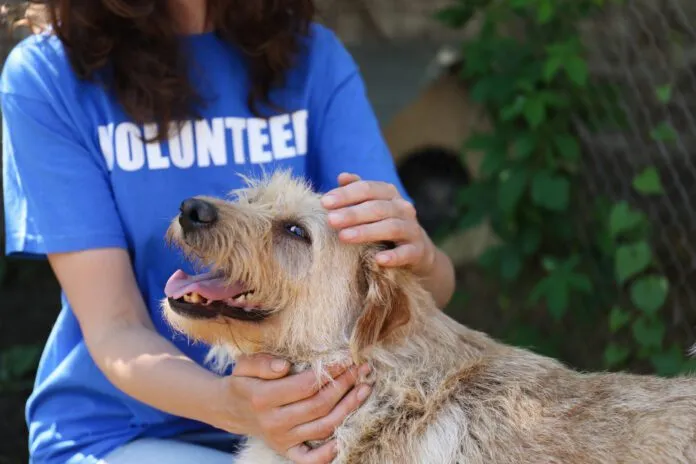You’re scrolling through your social media feed, and a heartbreaking video of a trembling, filthy, emaciated dog with the saddest, haunting eyes stops you in your tracks. The post says, “Bella needs medical help. Please donate to our rescue…” But you’ve never heard of the organization.
What do you do? How do you know the group is a legitimate nonprofit? And that Bella will get the care she needs?
“Paws-ing” for a moment, understanding how the system works, and doing a few minutes of research before you donate to dog charities can pay off.
Donating to Dog Charities
Thousands of animal-related nonprofit organizations are vying for donations, and experts say animal lovers are ready to assist.
“We find donors are highly invested and very interested in how they can support the animal welfare space; it’s one of our most searched areas,” says Jennifer Prelack, the director of charity curation at Charity Navigator, which researches, reviews, and rates nonprofits.
When it comes to the companion animal space, there’s a range of dog charities that need support.
From small, all-volunteer nonprofits that save dogs and find them new homes—to large charities with hundreds of employees that push for tougher puppy mill, backyard breeder, and animal abuse laws.
There are also nonprofit animal shelters, charities that provide spay and neuter surgeries, and foundations that help pay dogs’ veterinary bills.
“Many people see animals as a very vulnerable group,” Prelack says. “I think that’s why it feels so good to contribute, wanting to help crosses all people, all groups, and all viewpoints.”
Finding the Best Animal Charities
With such a vast array of nonprofit groups all rallying for seemingly good causes, how do you decide where to donate?
Look for organizations that advocate for issues that are important or even personal to you.
Perhaps you adopted your beloved pup from a rescue that saves dogs from high-kill shelters and want to give back. Or you know your local animal sanctuary is overwhelmed. Maybe you want to help Bella, the dog on your social media feed.
Once you’ve identified a dog charity you feel pulls on your heartstrings, head to their website and read the mission statement or “about us” section.
Does their cause align with your personal beliefs and a purpose you want to support?
If you feel like there’s a connection, it’s time to put on your pet detective hat and find out more about the group. “We say give with heart but use your head,” Prelack says.
These days, there’s a wealth of information about charities online.
How to Check Out a Charity
Stay on the group’s website and see what information you can dig up.
Check Out a Charity’s Website
Look for how the nonprofit showcases its impact.
- What programs do they offer?
- Do they show examples of their work?
- Do they have an online annual report listing their accomplishments?
- Do they say where their donations go?
- Do they have statistics such as the number of dogs saved?
“We’re finding a lot of donors are increasingly valuing data-driven results and organizations that have measurable outcomes,” Prelack says.
Check Out a Charity’s Tax Return
Finding an organization’s tax return (Form 990) on its website can give you a lot of information and help you ensure a group is an official 501(c)(3) nonprofit. You can also ask the charity to send you a copy.
If the form isn’t on the nonprofit’s website, or you have trouble getting it, you can likely find it on the IRS website or on the websites of groups that review nonprofits, like Charity Navigator, Guidestar, CharityWatch, and ProPublica.
These charity watchdog websites have experts and number crunchers who interpret the tax forms for you. Each organization has different criteria for evaluating nonprofits and following the money trail.
One nonprofit might have an excellent rating on one site and a failing grade on another.
“There are about 1.8 million nonprofits in the U.S., and donors are looking for guidance; they’re looking for some understanding,” Prelack says. “We want them to be able to confirm if an organization is reputable and is effectively achieving its mission.”
Here are some key factors to review on a group’s Form 990:
- How much are the executives and employees making?
- What is the charity spending their money on?
- How much of their total income goes to the cause?
- Is most of the money going to the dogs?
If you’re reviewing a large animal rescue’s tax return, does a majority of their money pay for boarding, medical care, supplies, food, and vaccines that benefit the dogs? Or do most of the donations go to someone’s paycheck or paychecks?
Try Different Google Searches
Google the nonprofit’s name and see what you find. It seems like a no-brainer, but you’d be surprised at what might pop up. Sometimes, you’ll see the good, the bad, and the ugly. The organization may have been honored with awards, covered positively in the news, or is recovering from a scandal.
Then, Google the group’s name with quotation marks around it (e.g., “Doggy Dog Rescue”). This tells the search engine to only look for the nonprofit’s exact name and weed out other entries.
While you’re Googling, try one more search. Type the charity’s name with the word: complaints (e.g., Doggy Dog Rescue complaints). This keyword helps narrow your query even more. You can see if people are griping about the organization or if the group has ever been in trouble.
Check Out a Group’s Social Media Pages
A group’s social media pages can reveal some essential information.
- Is the group posting achievements and compelling cases?
- Do you see before and after pictures of dogs the group saved?
- Do the posts seem coherent, spelled correctly, and thoughtful?
- What are people saying in the comments section of posts?
- What is the group’s rating? (If the social media site has that feature)
- What do the complaints and compliments say?
Of course, some comments or complaints may be exaggerated or unfounded, but also see how a group responds to complaints. Are they respectful and can you see their side of the situation?
Watch Out for Scams
Sadly, scammers are out there trying to take advantage of your goodwill.
Watch for some common pitfalls, warning signs, and red flags.
Email Precautions
If you get an email from a charity, even if it’s one you’ve donated to in the past, read it carefully. Does it sound legit? Are words spelled right? Are sentences properly structured?
What is the sender’s actual email address? It might say “Doggy Dog Rescue” in the name field, but if you look at the exact email address, is it clearly from the organization? Or is the email address weird? Like a bunch of letters, numbers, or something odd?
Those are all red flags.
Be careful about clicking on any links in the email, especially if it seems suspicious. If you want to donate, go directly to the charity’s website.
Text and Phone Precautions
If you get a call from someone who says they’re with a charity that needs your support, hold the phone.
Should you want to listen to what they say, ask them to clearly identify which charity they’re with and how you can donate.
If the caller’s plea is overly emotional, feels like high-pressure sales, and “they need you to act now,” that’s a red flag.
Be cautious about giving credit numbers over the phone. Never pay anyone who asks you to send donations via gift cards, pay cards, or wire transfers. Instead, ask the caller for the nonprofit’s website and follow all the steps above to check out the charity.
If you receive a text, be wary of clicking on links, texting back, or giving personal information.
Check Mailing Precautions
Unfortunately, even mailing a check these days comes with risks.
Record numbers of criminals are swiping checks from the mail, even robbing carriers and stealing their mail.
The thieves often use chemicals or heavy-duty erasers to “wash” checks. They may change your $500 check to a $5000 check, make it payable to someone else, and cash it. This could clean out your bank account, and getting the money refunded can be a mess.
If you want to donate by check, take precautions:
- Put the check in an envelope you can’t see through.
- Bring the envelope inside the post office to mail.
- Don’t put the envelope in your mailbox with the flag up.
- Use permanent, gel-based ink to write the check so it’s difficult to alter.
The American Bankers Association has more tips on how to prevent check fraud.
Contact a Nonprofit
If you need help finding more information about a charity, contact the organization. Their response, enthusiasm, and willingness to answer your questions may determine whether you want to donate.
If you can’t donate but want to provide help for animals, shelters and rescue groups need volunteers and fosters. Right now, a record number of dogs are in dire need of assistance.
“There are so many organizations that are working really hard to do the work they’re doing,” Prelack says. “Donating is critical and a great way to support an organization you care about, but volunteering is also an excellent way to give back.”








